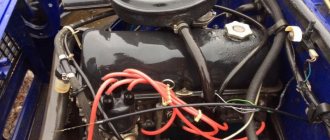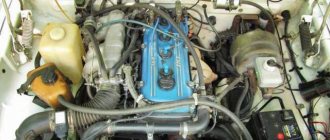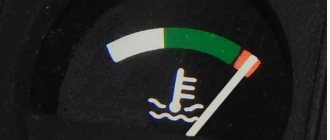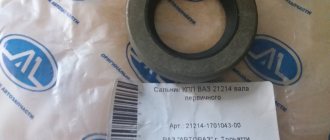Increasingly, car owners decide to undergo such a procedure as washing the engine of their favorite car. It is certainly necessary to clean the power unit, since its condition and durability depend on it. But sometimes after water procedures the engine gives drivers a surprise - the engine stalls or does not start. In order to respond to such a turn of events in a timely manner, it is necessary to understand what actions to take next.
Various problems may occur after washing your car.
What to do if the engine stalls after washing
First of all, check all contacts. Blow them well with a compressor or air gun. If the contacts oxidize, this can lead to a short circuit. Fuses may blow. Therefore, it is worth checking them too. After which you need to check the coils, they also need to be blown out and very carefully. This is usually the main problem that causes the engine to misfire.
Check if the air filter and mass air flow sensor are wet. If water suddenly gets into the air intake, it is likely that the engine will experience water hammer. So be careful with this knot. Before washing the car engine, it is better to bandage such sensors well. But if you washed it “like this”, then it is better to blow it out before starting the engine.
If all these steps did not help you, then it is best to call a tow truck and take the car to a service station. Believe me, it’s better to spend money on this, because if you start the engine and drive away, the consequences will cost even more money.
Why does my car jerk after washing?
If the car jerks after washing, this indicates that there is a malfunction in the engine and one (or more) cylinders are not working correctly. There may be several reasons for this:
- The water ended up in the candle wells. If a similar situation arises, then the charge supplied to the spark plugs does not form an “even” spark and spreads to the sides. If the spark plugs operate for a long time in this mode, they are likely to fail quickly;
- Problems with sensors. If alkaline products were used when washing the engine, there is a possibility that they got on the sensors. This may lead to their incorrect operation or failure;
- Damage to other engine components. Car manufacturers warn that you need to wash the engine very carefully, without applying high pressure water to the engine. Some drivers neglect this advice, resulting in damage to one or more engine units.
There are many problems that can arise with the engine due to improper washing, and some of them may be “hidden”, that is, they will not manifest themselves in one day, so it is important to wash the engine correctly.
Reasons why the engine may start to stall after washing
Any car owner may encounter a situation where one of the cylinders stops functioning normally after washing the engine. Even a car that was in perfect working order before visiting the car wash is not insured against this problem. The main reasons contributing to the occurrence of tripling are:
- Moisture getting into spark plug wells. This leads to the impossibility of normal sparking. Some of the charge is lost and does not reach the electrodes. Long-term operation of the machine with an inoperative cylinder leads to damage to the spark plug, dilution of the oil with gasoline and accelerated wear of the power unit;
- Sensor failure. The active components included in car shampoos can damage both the device itself and its contacts. As a result, the electronic control unit receives unreliable information, leading to engine vibration. To alert the car owner about a problem that has arisen, the check engine lights up on the dashboard;
- If a high-pressure unit, for example a Karcher, was used to wash the engine, then mechanical damage to parts and components in the engine compartment is possible. Most car manufacturers prohibit or do not recommend using this cleaning method.
Washing a car with a Karcher
On older cars, situations arise where water gets into the distributor. This leads to malfunctions in the ignition system, causing the power plant to trip. Normalization of operation is possible only after eliminating the liquid by purging the device.
Distributor
Moisture getting into unacceptable areas of the engine compartment usually makes itself felt immediately after visiting a car wash, but there are exceptions. For example, the process of contact oxidation may take several days, which will delay the onset of problems with the machine. The same applies to light mechanical damage, which leads to breakdown only after exposure to shocks and vibrations associated with the daily operation of the iron horse.
The main reasons for unstable engine operation after washing
As a rule, if problems arise with the engine after washing, car owners complain that the power unit is not working. That is, not all cylinders are working. The following signs and symptoms may also be observed: loss of power, increased fuel consumption, problems with starting the internal combustion engine, etc.
Note that there are not so many main reasons why the engine jerks after washing:
- damp candles. Water enters the spark plug well, as a result of which a spark does not occur at the spark plug electrodes.
- It also happens that there is a spark, but it is not powerful enough. If the spark plugs work in this state for a long enough time, they may well completely fail;
- damage to sensors by detergents (if they contain alkali);
- damage to elements in the engine compartment due to excess water pressure during washing;
As you can see, if the car jerks after washing the engine, all problems arise due to errors during the process of removing contaminants, as well as as a result of neglecting basic rules and recommendations.
Most often, drivers strive to wash their car and engine cheaply and with the least amount of effort. To do this, many people prefer to use equipment that creates a high-pressure water jet to wash the engine.
We also recommend reading the article about
how to wash a car engine with Karcher
. From this article you will learn what you need to consider if you decide to wash your car engine with a high-pressure cleaner.
For example, regular car shampoo and Karcher engine wash. The result is moisture ingress, unstable operation of the internal combustion engine or the inability to start it. In the worst case, a short circuit may occur.
How to identify a malfunction
The breakdown can be visually determined by the following behavior of the car: if the idle speed is started (not aimed at making the car move), the faulty engine will not operate as intended by the manufacturer. Also, his work may be accompanied by failures.
An additional element by which the malfunction is determined: the car starts, but begins to stall. The more severe the malfunction, the more often such engine stops occur. Even after the factory, the car may begin to twitch noticeably. It is also recommended to pay attention to the presence of the following “symptoms”:
Fuel consumption increases sharply (up to 2-3 times in total for a certain period of road) (gasoline or diesel does not matter in this case). For example: 50 liters was enough to travel 500 km, but after a malfunction occurs, the same amount will only be enough for 300 km.
The usual power is noticeably lost - the declared horsepower is no longer enough for the car to perform usual actions (for example, it becomes more difficult to overcome poorly cleared roads in winter).
There are problems starting the engine.
In 90% of cases, problems after washing are observed in the cold season or in regions where the climate is unstable. In most cases, frozen water leads to the formation of ice, which also negatively affects overall performance.
Afterword
If the car consistently does not want to work after washing, then the reasons may be small cracks in the distributor cover or in the insulation of armored wires, or insufficient engine tightness. In any case, the fault must be found and eliminated.
On the other hand, such complications are easy to avoid: you should not wash the engine under high pressure; it will be enough to rinse it under a running hose or douse it with a bucket of water. To wash the engine from dirt, you need to purchase high-quality chemicals and begin the procedure or go to a car wash, which can be found on specialized websites, for example, GoBonus.
Elimination of uneven motor operation
Most often, the engine stalls after washing due to water getting into the ignition system. This is where you should start troubleshooting. The following items need to be checked:
- distributor, if present in the ignition system;
- armored wires;
- ignition coil;
- candle wells.
If there is liquid on any of the above elements, it must be removed. When wiping elements, you should visually check their technical condition. There may be situations when, after washing, cracked high-voltage wires or worn-out spark plugs are revealed. If you notice an element that has come out of order, you must replace it without waiting for scheduled maintenance.
It is more difficult to detect water getting inside the cylinders and damage to the sensors. Usually in this case computer diagnostics comes to the rescue. By reading the error log, a specialist can determine why the Check Engine light came on and the engine tripped.
What should the driver do?
If there is a problem, the engine will definitely stall. It’s quite difficult not to notice this. With such a pronounced nature of the violation, it is not recommended to travel by car. It is necessary to check the engine for serviceability and identify violations immediately, otherwise it can lead to more serious consequences. To definitely protect yourself from an unpleasant scenario of events, you need to perform the following sequence of actions:
- Bring the car to the premises for diagnostics;
- Inspect and then wipe with dry material the contacts, wiring and the most important ignition elements;
- Remove the coils and blow them out using compressed air;
- Remove excess moisture from the candles (this is done using compressed air);
- Assemble and start the engine.
After starting, the car needs to run continuously for some time. 3 minutes is enough for this. Next you need to drive the car and see if there is any friction in the engine itself. The problem is considered successfully resolved if no violations were identified as a result of the inspection.
Reasons for car failure to start
The reasons why the car refuses to start after washing the engine are mostly similar to faults that cause the engine to trip. The ignition system can only function normally when it is dry. Water, becoming a conductor, promotes charge flow, short circuits and other unpleasant consequences that can worsen sparking.
The starting system of the power plant is also affected by moisture. Most affected:
- Battery terminals. Their gradual oxidation is a natural process. Water that gets on the battery acts as a catalyst. The result is accelerated corrosion and loss of electrical contact. Accelerated battery discharge is also possible due to the formation of a new circuit consisting of water, salts and electrolyte;
- Generator. Entering water can damage it. In this case, after the windings dry out, operability may not return;
- Electrical wiring and other elements of the engine starting system.
Battery terminals
Pouring water into the air filter can cause the car to not start. This creates a risk of liquid getting inside the cylinders. This is fraught with water hammer. After this, an expensive overhaul of the cylinder-piston group is guaranteed.
Tips for restoring the performance of the power plant
If cleaning the engine compartment results in the engine being unable to start, the car owner should not panic and immediately call a tow truck. You can correct the situation right on the spot. It is enough to dry the places where liquid accumulates. It is recommended to adhere to the following instructions:
- Open the hood and visually inspect the power plant and other components. Any water found must be carefully removed;
- Remove the terminals from the battery and remove oxides;
- Wipe the high-voltage wires along the entire length;
- Unscrew the spark plugs and let them dry. Make sure there is no water in their planting areas;
- If there is a distributor, it must be dismantled. After this, remove the lid and wipe everything dry;
- Open the air filter housing and make sure there is no liquid in it;
- Check the status of the alarm.
If the above steps did not help, then the malfunction did not arise as a result of the engine being washed, but for other reasons. In this case, it is necessary to begin troubleshooting components and parts. For example, a cracked distributor cap could perform its functions when dry, but the appearance of moisture completely rendered it inoperable.
What to do before contacting the service
An experienced driver or a novice should take into account that in some cases, a layer of dirt formed on the terminals, which has a pronounced dark color, causes the engine to start shaking after washing. It is eliminated with water, which leads to a malfunction. That is why it is important to wipe the terminals dry after cleaning and carefully tighten them.
It becomes more difficult when after washing it turns out that water or condensate particles, elements of car cosmetics or other liquid components have penetrated under the hood. In this case, it doesn’t matter at all how the washing was done: independently or by professionals, because such a nuisance can happen to anyone. In order to eliminate the consequences of moisture or condensation penetration, you will need:
Turn off the car (turn off the ignition).
Turn it on again (check operation).
In 90% of cases, after cleaning using any liquids and even shampoos, violations are present there.
If you have an ignition distributor, you will first need:
Disassemble the distributor.
Remove residual water and moisture under the lid.
Additionally, wipe the armored wires.
Check the spark plug windows to ensure they are completely dry.
If the presence of water in the spark plugs is detected, it is not recommended to start the engine with choke. Such an action will not have the desired effect (it will not stop tripping). When blowing spark plugs, it is best to remove the choke, then squeeze out the gas and only then start the engine.
It also happens that the car has an ignition without a distributor. In this case, to restore functionality, the car owner will need:
Unscrew the coils (all of them).
Remove them to make them easier to work with.
Blow them out.
Wipe so that the spark plug wells are dry.
It is recommended to lubricate wires with a high voltage rating with a special compound called WD-40. This will make it possible to maintain the functionality of the engine with the maximum probability after washing.
Additional recommendations
If the engine troubles significantly after washing, even after the measures taken, it is recommended to pay attention to the following:
are there any cracks or deep chips in the distributor body;
What condition are the electrical wires of the car?
The engine can also be damaged after washing only from the outside.
Timing problems
It must be taken into account that after contact with water, the timing belt may break. A quick knock of the starter will help determine the malfunction. If a break does not occur, but there is a knocking sound, then the problem may lie in problems with the ignition spark supply or with the carburetor (if the car has one). Electronic ignition should not be overlooked, since after contact with water the engine may start to troit and the car may stall while driving.
How to avoid the problem
The driver will not suffer any unpleasant consequences from washing the engine while observing safety precautions. You should avoid cleaning the engine compartment with a jet of water under pressure. Additionally protect moisture-sensitive areas - generator, spark plug wells, exposed contacts.
Before washing, prepare a set of materials and tools to clean the engine from oil and dirt. You need clean rags, brushes of different sizes with handles. For better results, you can use chemical reagents designed for washing car engine compartments. Carry out work in a well-ventilated, enclosed area.
How to fix the situation
Since water is the cause of problems after washing, it is necessary to take all measures to remove it.
To do this, you need to place the car in a dry place and thoroughly wipe all the wiring or blow it out with a compressor. The same actions should be applied to the armored wires of the spark plugs. Next, it is important to pay attention to the battery terminals and make sure they are securely attached.
Sometimes a gray coating appears on the terminals, which impairs contact. It (plaque) can be easily removed with water. When the driver has washed the terminals, he must wipe them until they are perfectly dry and tighten them thoroughly.
The battery terminals must be securely fastened
If water did not enter the engine compartment during washing, then the above measures should be sufficient to bring the engine into working condition.
In the event that moisture has penetrated under the hood, a number of additional efforts will have to be made to bring the unit in order.
Tidying up the engine compartment
You need to start inspecting the engine compartment of a car that stubbornly refuses to start by checking the ignition system. It is in this part of the unit that problems most often arise after the owner has carefully washed the power plant of his car.
In those cars that are equipped with a distributor structure, it is necessary to disassemble the distributor itself, and then remove any remaining moisture under the cover. And only when everything is thoroughly blown and wiped, you can move on to the armored wires, wiping them until they are dry. It is also important to remember about spark plug wells - they must be thoroughly dried.
Photo of distributor
Speaking about blowing out spark plug wells, it is worth noting the following: often when spark plugs are flooded during a wash or under other circumstances, drivers try to start the car using a choke, but this strategy is ineffective. The best thing you can do to blow out the spark plugs is to remove the choke, press the gas pedal, and start the engine. Thus, high-quality cleaning will be carried out, and the unit will start.
If it so happens that the car has a distributorless ignition system, which is equipped with an individual coil for each individual cylinder, then you will have to be patient. The shutter speed will be needed in order to remove all the coils one by one, while blowing and wiping the spark plug wells. In this situation, there is a plus and a minus: the distributor cover is more difficult to remove than the coils, but some of the coils may be difficult to access, which also entails considerable effort and time.
When cleaning spark plugs, you need to make sure they are in working order. To do this, you need to unscrew them and carefully inspect them.
Spark plugs must be in working order
When all procedures are completed, you can try to start the car.
To save yourself from contemplating how the car jerks or does not start, you need to clean the distributor cover, high-voltage wires, and ignition coil from dirt and deposits, and lubricate them with WD-40 liquid or silicone grease. Such measures will not only help maintain the performance of the engine that has been washed, but will also allow it to operate without problems in wet weather.
Another reason for constant problems with the engine may be a breakdown in the armored wires or distributor housing. In this condition, the unit also suffers from the fact that the owner of the car only washed the body of his car. Correcting the situation is quite simple - you need to find the part that has a crack (wires, distributor) and replace it.
Other faults
Sometimes drivers encounter various engine problems that are not directly caused by washing the power plant, and since some of these problems are common, it is worth knowing about them.
- For example, sometimes drivers, having underestimated the terrain on a particular section of the road, drive into a puddle that turns out to be unexpectedly deep. In such situations, the engine often stalls. If the unit is silent, then this means only one thing: water has flooded the distributor cover, wires and coil. With such a diagnosis, you should not waste time trying to start the car. It is better to find a clean rag and thoroughly wipe the flooded parts of the engine until they are dry. As a result, the unit usually starts.
How to protect from water when washing
The best remedy is, of course, not to wash the engine. But how to remove oil stains? There are several ways. The most neutral one, which does not lead to consequences, is to buy a grease remover from dishes in a store, spray it on and wait a few minutes until everything drips down. Then use a compressor to thoroughly blow through all engine parts. But no moisture or water.
The second way is to mix a little gasoline with mallow - a product that many car mechanics use to wash their hands, pour this mixture into a spray bottle, spray it on the engine and also air dry.
Recommendations for washing the car engine
After a properly carried out washing procedure, all engines start and run without problems. Malfunctions occur only when the technology for cleaning the engine compartment is violated or when the car manufacturer’s recommendations are deviated. For example, when using a high-pressure washer, water may get under the seals and cause mechanical damage to the components. Also, for contactless cleaning, car shampoo with a more aggressive active ingredient is used. This in turn causes corrosion of aluminum and copper surfaces.
The most gentle way to clean the engine is to use special aerosols. Attachments that are sensitive to moisture should be covered with plastic wrap. To prevent short circuits and damage to electronics, it is recommended to disconnect the terminals from the battery. Spraying should occur on a warm engine. On a cold engine, the activity of the substances will be reduced, and a too hot power unit will lead to rapid evaporation of the cleaning agent. After applying the aerosol, you need to wait 15-20 minutes. It is necessary to rinse the engine compartment with low pressure of running water.
To reduce the risk of moisture getting into unintended areas, you can wash the engine yourself. For these purposes, you need a sponge, rags and regular car shampoo that dissolves the oil film. You can use a toothbrush to clean hard-to-reach areas.
Upon completion of washing, it is advisable to blow out the spark plug wells. For these purposes, compressed air from a compressor is usually used. It is possible to dry using a spray can or a regular hair dryer. Upon completion of washing, it is better to leave the car in a warm garage. This is especially true when operating the machine in winter.
Washing the engine is a mandatory step to keep the engine compartment in order. When cleaning, you should strictly follow the car manufacturer's recommendations and use high-quality products. This will protect the car from unpleasant consequences in the form of a throbbing engine or difficult starting.
Nuances and important points: why wash
If there are problems, then after washing (professional or self-washing) there will be a deterioration in performance - the car’s engine will begin to stall. As a result:
The car will stop starting.
It will stall on the road.
It will stall after factory.
It won't start the first time.
The problem needs to be fixed as quickly as possible so that there is no need to overhaul the engine or replace it.
How to wash the engine?
To avoid dancing with tambourines around a faulty car, you should wash the engine properly. Do not use high water pressure for washing. It is also not recommended to use shampoos for contactless washing to wash the engine; they contain alkali, which negatively affects the condition of the engine.
The safest way is to use a special aerosol. Before this, all attached parts are covered. The substance should be applied to a warm engine. After which, let the car sit for half an hour. All that remains is to wash off the aerosol with a weak stream of running water.
Conclusion
. The engine sometimes needs to be washed, this has a positive effect on its heat transfer. But this must be done carefully. If you do this incorrectly, then most likely you will have to solve the question of why the car jerks after washing the engine. The reasons for this are directly related to moisture getting into the ignition system, as well as the sensors. To resolve this issue, you will need to test all of these items.
Is it necessary to wash the engine?
There are many opinions and rumors regarding this issue. There are always pros and cons, pros and cons. One of the reasons why the engine is washed is heavy leaks of oil, antifreeze, or antifreeze. The biggest cause of this, of course, is the oil sludge on the engine. It interferes with normal cooling in the summer and the engine overheats. To see and then eliminate where the oil is leaking from, it’s a good idea to wash the engine in a car wash with special chemicals and knock it all down under pressure with water. Coolant corrodes contacts, engine harness wires, electronic control unit and other electrical components of the internal combustion engine, which can adversely affect the operation of the engine.
If the car is often driven outside the city, in the forest, or on rough terrain, dirt sticks heavily to the engine, cooling fan, and radiator. If you don’t knock the clay off the fan in time, it will create vibration and simply break the bearing over time, and you’ll have to replace it. And the cost reaches, especially on foreign cars, colossal amounts.
This way, you can be sure that engine washing is necessary in some cases. But doing it just for the sake of prevention, or against dust, makes no sense. After all, the price of such a procedure can result in tens, or even 100 thousand rubles. One of the expensive components in the engine compartment is the electronic engine control unit. Its cost is measured in tens of thousands of rubles, it all depends on the make of the car. The second most expensive part and the most risk of failure is the ignition coil. It's not cheap. Why are these expensive parts listed in the engine compartment? The thing is that when washing the engine, the car starts to misfire, precisely because of them.
No spark
Since a high-pressure apparatus is used when washing the engine, the amount of water it produces is enormous. Some of it ends up in spark plug wells on sixteen valve, two shaft or more engines. Car owners, of course, do not suspect this; they start the engine, the coil begins to spark through the water onto the engine ground and immediately closes. If in such a situation you do not turn off the engine and drive further under load, the coil can pierce the primary circuit so much that reverse current flows towards the electronic control unit and burns through the transistor that controls the coil and nearby circuit board tracks. Then the brain cannot be restored; you will have to buy a new one. It's not a cheap purchase and most cars don't have them in stock.
Often, when selling a car, the engine is washed in order to hide oil leaks, or simply for beauty in order to sell it at a higher price. For example, on vases with an eight-valve engine, the ignition coil, which is located opposite the cooling radiator, is immediately filled. It strikes a spark and covers high-voltage wires and spark plugs along the chain. It is rare, but there is a breakdown of the ECU itself, as described above.
Thus, when water gets into the spark plug wells after washing, the engine shakes and the car jerks violently. Until the water is removed from there and the broken parts of the high-voltage circuit are replaced, the motor will operate unstably. After washing the engine, you can leave the car with the hood open for a while and wait until all the parts dry. The best option, of course, would be to blow the engine with air from the compressor.
Action of alkali
Shampoos for washing cars and engines have a powerful alkaline composition that is designed for oil and fat deposits. He washes them off in one go. But when they wash the engine with it, contact also occurs with the plastic of sensors, high-voltage wires, and ignition coils. The composition of the product begins to corrode, especially on older cars, the wiring and short circuits appear, which leads to tripping, and worst of all, when the car does not start.











